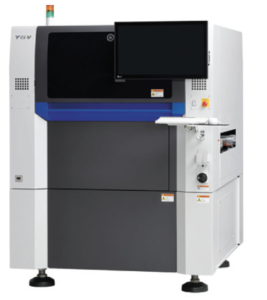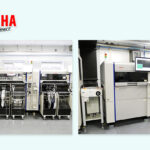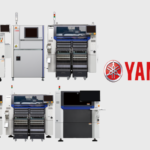ASIA ELECTRONICS INDUSTRYYOUR WINDOW TO SMART MANUFACTURING
Yamaha Motor Releases Higher-End Version of Hybrid AOI System
Yamaha Motor Co., Ltd. is set to release the YRi-V 3D hybrid automated optical inspection (AOI) system, which achieves both high speed and high precision in operation for high-end factories mounting electronic components.
YRi-V has been developed as a higher-end version of the bestselling YSi-V 3D hybrid AOI system, which is equipped with 2D inspection, 3D inspection and a four-direction angular camera in a single machine. By adopting a newly developed inspection head equipped with a high-speed, high-resolution camera, an updated 3D projector, and a high-performance graphics processor, YRi-V achieves one of the industry’s fastest inspection speeds. Further, inspection performance has been greatly improved while building on previous levels of convenience and functionality, such as raising the inspection capabilities for fine-pitch ultra-small components and detecting scratches, cracks, chipped areas and the like with mirror-surface finishes, a difficulty until now.

The main features of the new AOI model include 1) high levels of both speed and precision by adopting a newly developed inspection head equipped with a high-speed, high-resolution camera and a high-precision 8-direction 3D projector; 2) more functionality such as greater component inspection compatibility thanks to new coaxial lighting and more compatible PCB lengths via revised conveyors; and 3) improved usability thanks to using deep learning powered by artificial intelligence (AI) and other changes to simplify, automate and lower skill requirements for inspection data creation, conversion, tuning.
High Speed, High Precision
The newly developed inspection head features today’s 12μm and 7μm resolution lenses as well as the new 5μm resolution lens compatible with 0201 size ultra-small chip components. YRi-V gains all-new lighting with increased luminance and is also equipped with the industry’s fastest high-speed, high-resolution camera with an increased frame rate. Employing a high-performance graphics processor yields faster image processing capabilities that achieve incredible speeds, almost twice that of the current YSi-V TypeHS2 at 7μm and 1.6 times at 12μm.
Updating the 3D projector has also enabled even more precise inspections, with both measurement accuracy and range doubled compared to current models and high-precision measurement now possible for up to 25mm in height.
Furthermore, by combining the 5μm lens and an 8-direction 3D projector, it is possible to perform high-precision 3D inspections of 0201-size ultra-small chip components and fine pitch components with imaging at high resolutions without the effects of component blind spots.
Greater Functionality
The inspection head’s new coaxial lighting bolsters the capability to detect scratches, cracks and chipped areas on mirror-surface components, and the detection sensitivity has also been improved.
In addition, the revised conveyors expand the range of compatible PCB lengths and it is possible to flexibly handle longer, 1,200mm PCBs (with optional fittings). In a dual-lane setup, the freer adjustability of fixed positions for rails 2, 3 and 4 have improved versatility when linking up with other equipment.
Improved Usability
Intuitive operation is possible with the new graphical user interface’s next-generation design. Automating various functions, incorporating AI and more has enabled Yamaha to offer a full range of support functions for creating inspection data and for tuning data without the need for a high skillset among operators.
It is possible to convert CAD/CAM/YGX data into inspection data in a single step. In addition, the machine is compatible with Gerber data as standard and automatically generates virtual board images.
When creating data, it is easier to create inspection data with features, like offline data creation, individual 3D projector condition settings and automatic creation of through-hole data from raw board images.
Data tuning time is halved by eliminating inspection frames (automatic calculation), automating lighting parameters and automatic position correction that accurately accounts for the degree of component misalignment.
In addition, AI deep learning identifies the component type from the component image and automatically sets the ideal component library. It also greatly promotes further automation and labor saving, such as automating new component library creation and aiding with secondary visual checks and decisions.



